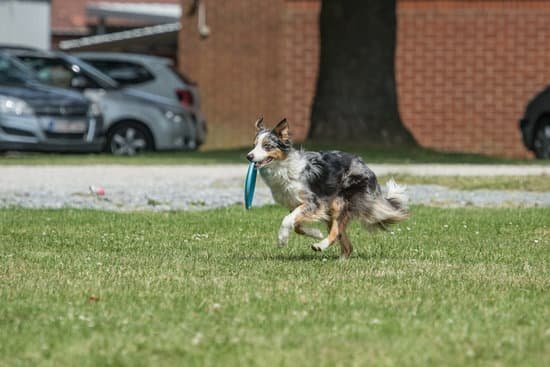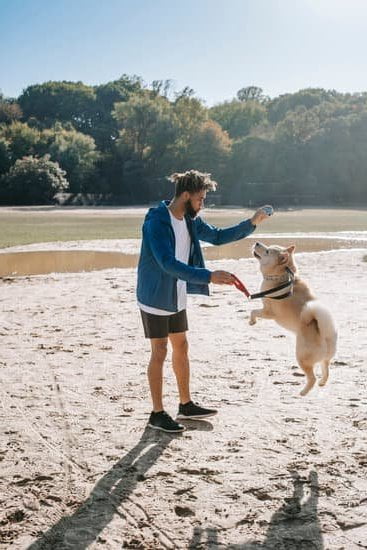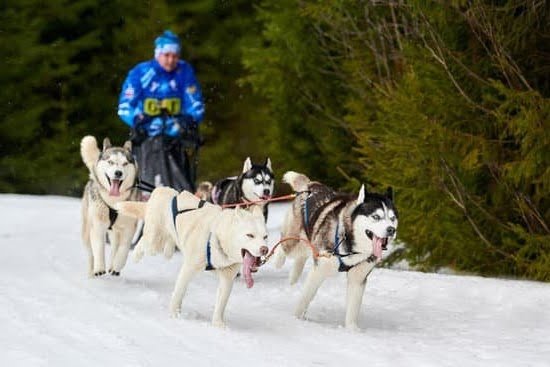Are you wondering how to train your dog to be a service dog? Service dogs play a crucial role in the lives of individuals with disabilities, providing assistance and support with daily tasks. In this article, we will explore the training process for service dogs, from basic obedience to advanced task training. Understanding the important role that service dogs play in the lives of their handlers is essential for anyone considering this type of training for their canine companion.
Service dogs are specially trained to assist individuals with physical or mental disabilities, helping them navigate life with greater independence and confidence. Whether it’s guiding someone who is visually impaired, alerting someone with epilepsy to an oncoming seizure, or providing emotional support for someone with PTSD, the impact of a well-trained service dog can be truly life-changing.
In this section, we will delve into the specific requirements and responsibilities associated with training a service dog, as well as considerations for individuals who may benefit from having a service dog in their lives.
Throughout this article, we will provide valuable insights into the different stages of service dog training, including assessing your dog’s suitability for the role and understanding the legal rights and responsibilities of service dog handlers. By gaining a deeper understanding of the role of a service dog and its impact on people’s lives, you can make an informed decision about whether pursuing service dog training is the right choice for you and your canine companion.
Is Your Dog a Good Candidate for Service Dog Training?
Many people wonder if their beloved pet can become a service dog. While not every dog is cut out for this important role, there are certain characteristics and traits that make a dog a good candidate for service dog training. Here are some factors to consider:
- Temperament: A service dog needs to be calm, patient, and able to remain focused even in highly stimulating environments. They should also be friendly and well-socialized with people and other animals.
- Health: A service dog must be in good physical health, free from any chronic or debilitating conditions that could interfere with their ability to perform their duties.
- Trainability: A good service dog candidate should be intelligent, eager to learn, and responsive to commands from their handler.
- Size: While there is no specific size requirement for service dogs, they should be physically capable of performing the tasks required of them. This means that larger breeds may be better suited for certain types of assistance work, such as mobility assistance.
If you believe your dog possesses these qualities, they may have the potential to become a successful service dog. However, it’s important to keep in mind that not all dogs are suited for this type of work, and it’s essential to assess your pet’s abilities realistically before pursuing formal training.
When considering how to train your dog to be a service dog, it’s crucial to remember that the process is rigorous and demanding. It requires patience, commitment, and dedication on both the part of the handler and the canine trainee. With proper guidance and support, however, many dogs can excel in their role as a reliable service animal.
Getting Started
Understanding the Importance of Basic Obedience
Before delving into advanced service dog tasks, it is crucial to establish a strong foundation of basic obedience training for your dog. This includes teaching essential commands such as sit, stay, come, and heel. These commands form the building blocks for more complex tasks that a service dog may be required to perform.
Working With a Professional Trainer
While some dog owners may choose to train their service dog candidate on their own, enlisting the help of a professional trainer can be immensely beneficial. A certified trainer can provide expert guidance and support in developing your dog’s obedience skills, ensuring that they are well-prepared for the demands of service dog training.
Consistency and Patience
Training a service dog to have impeccable obedience requires consistency and patience. Dogs thrive on routine and repetition, so it is important to practice commands regularly in various environments. Additionally, maintaining a calm and patient demeanor during training sessions will help foster a positive learning experience for your canine partner.
By focusing on basic obedience training, you can lay a solid groundwork for your service dog candidate’s future success. With dedication and the right approach, you can cultivate the essential skills needed to progress to more advanced tasks in service dog training.
Advanced Training Techniques for Service Dog Tasks
Once your dog has mastered the basic obedience training and has shown the right temperament, it’s time to move on to advanced training techniques for service dog tasks. These tasks can include mobility assistance, medical alert, psychiatric support, and more. It’s important to note that these tasks should be tailored to the specific needs of the handler, so it’s essential to work closely with a professional trainer or organization experienced in training service dogs.
For mobility assistance, advanced training may involve learning how to open doors, retrieve items, provide stability while walking or standing, and even pulling a wheelchair if necessary. Medical alert training can involve teaching the dog to recognize and respond to various medical conditions such as seizures, diabetes, or allergies.
Psychiatric support training may include tasks like interrupting self-harming behaviors, providing deep pressure therapy during anxiety attacks, and creating personal space boundaries in crowded areas. Each of these tasks requires specialized training techniques and a deep understanding of the specific needs of the handler.
One effective technique for advanced service dog task training is using positive reinforcement methods such as clicker training. This method involves using a clicking sound to mark desired behavior followed by a reward. By consistently reinforcing the desired behavior with rewards, the dog learns to associate the task with positive outcomes.
Additionally, shaping is another useful technique where small steps toward the final behavior are rewarded, gradually leading to the full task being performed. It’s essential for trainers and handlers to understand that each dog learns at its own pace and that patience and consistency are key in advanced service dog task training.
| Service Dog Task | Training Technique |
|---|---|
| Mobility Assistance | Clicker Training |
| Medical Alert | Shaping |
| Psychiatric Support | Positive Reinforcement |
Choosing the Right Service Dog Gear
When training your dog to be a service dog, it’s important to find the right gear to ensure their safety and effectiveness in assisting you. Here are some key items to consider when choosing the right service dog gear:
1. Harnesses: A comfortable and durable harness is essential for a service dog as it allows you to have better control and support during daily tasks. Look for a harness that distributes weight evenly and provides padding for your dog’s comfort.
2. Vests: Vests are not only a practical accessory for your service dog but also serve as a visual cue to others that your dog is working and should not be distracted. It’s important to choose a vest that is clearly labeled as “service dog” and fits properly on your dog.
3. ID tags and patches: In addition to the vest, having identification tags and patches that clearly indicate your dog is a service animal can help avoid misunderstandings in public spaces. Make sure these tags are easily visible and provide necessary information such as contact details and certification status.
When selecting gear for your service dog, always prioritize functionality, comfort, and visibility. Remember that the right gear not only benefits your canine partner but also ensures that they can carry out their duties effectively in various environments.
In addition, proper gear also contributes to the public’s understanding of the role of service dogs, making it easier for handlers to navigate real-world situations with their trained companions. By investing in quality gear, you can set up both yourself and your furry helper for success in their role as a service dog.
Public Access Training
Once your dog has successfully completed basic obedience training and advanced task training, it’s important to focus on public access training to prepare your service dog for real-world situations. Public access training involves acclimating your dog to various environments and teaching them how to behave appropriately in public settings.
One of the most important aspects of public access training is socialization. It’s crucial for service dogs to be comfortable and well-behaved around other people, animals, and distractions. This can be achieved through exposure to different environments such as shopping malls, restaurants, parks, and public transportation. Gradually exposing your dog to these environments will help them become more confident and adaptable in different situations.
Another key component of public access training is desensitization to loud noises, crowds, and other stimuli that may be encountered in public places. Exposing your dog to these stimuli in a controlled manner will help them remain calm and focused while performing their tasks. It’s also important to reinforce good behavior and obedience during public access training through positive reinforcement techniques such as treats, praise, and clicker training.
It’s important to remember that public access training is an ongoing process and requires consistent practice in various environments. Additionally, service dog handlers should familiarize themselves with the laws governing service animals in public places to ensure they are aware of their rights and responsibilities when out with their service dog.
| Aspect | Description |
|---|---|
| Socialization | Expose your service dog to different environments and teach them how to behave appropriately around people, animals, and distractions. |
| Desensitization | Gradually expose your service dog to loud noises, crowds, and other stimuli encountered in public places for them to remain calm. |
| Ongoing Practice | Public access training is an ongoing process that requires consistent practice in various environments. |
Understanding the Legal Rights and Responsibilities of Service Dog Handlers
Service dogs play a crucial role in assisting individuals with disabilities in their everyday lives. Understanding the legal rights and responsibilities of service dog handlers is essential for both the handler and the public. It is important to be aware of the laws and regulations that protect the rights of service dog handlers, as well as the responsibilities that come with handling a service dog in public spaces.
Legal Rights of Service Dog Handlers
Service dog handlers have legal rights that allow them to bring their service dogs into public places where pets are not typically allowed. The Americans with Disabilities Act (ADA) protects the rights of individuals with disabilities who use service animals. This means that service dog handlers have the right to be accompanied by their service dogs in places such as restaurants, grocery stores, hotels, and other public accommodations.
Responsibilities of Service Dog Handlers
While service dog handlers have legal rights, they also have specific responsibilities when it comes to handling their service animals in public. It is important for handlers to ensure that their service dogs are well-behaved and under control at all times. This includes keeping the dog on a leash or harness unless it interferes with the dog’s ability to perform its tasks.
Educating the Public
One important responsibility of service dog handlers is to educate the public about the role and rights of service animals. Many people may not fully understand what a service animal is or how they should interact with one. Service dog handlers can help by politely informing others about their rights under the ADA and providing guidance on how to best interact with a working service animal.
By understanding both the legal rights and responsibilities of being a service dog handler, individuals can ensure that they are advocating for themselves and their canine companions while also upholding proper etiquette in public spaces.
Maintaining Your Service Dog’s Training
In conclusion, the journey to training your dog to be a service dog is a long and ongoing process that requires dedication, patience, and consistency. Once your dog has completed their basic obedience and advanced training, it’s essential to understand that maintenance of their skills is crucial for long-term success. Consistent practice and reinforcement of their tasks and behaviors will ensure that they remain reliable in their role as a service dog.
One important aspect of maintaining your service dog’s training is to continually expose them to real-world situations through public access training. This will help them adapt to different environments and distractions, ultimately preparing them for the varied settings they may encounter while assisting their handler. Regular outings to stores, restaurants, and other public places will help solidify their training and ensure they are comfortable and focused in any situation.
Furthermore, staying up-to-date with the legal rights and responsibilities of service dog handlers is vital for ensuring the success of both you and your service dog. Understanding where you can go with your service dog, as well as how others should interact with them, is crucial for maintaining a safe and positive working environment for both the handler and the service dog.
By consistently incorporating these tips into your routine, you can ensure that your service dog remains well-trained and reliable in fulfilling their important role in assisting individuals with disabilities.
Frequently Asked Questions
Can I Train My Dog to Be a Service Dog by Myself?
Training your own service dog is possible, but it requires a significant amount of time, effort, and dedication on your part. It’s important to consider whether you have the necessary skills and resources to properly train a service dog.
How Long Does It Take to Train Your Dog to Be a Service Dog?
The length of time it takes to train a service dog can vary depending on factors such as the dog’s breed, age, temperament, and the specific tasks they need to perform. In general, it can take anywhere from 6 months to 2 years to fully train a service dog.
How Many Commands Must a Dog Learn to Be a Service Dog?
A service dog must learn a variety of commands in order to assist their handler effectively. These commands can include tasks such as retrieving objects, providing stability or balance support, alerting to medical conditions, and much more. The number of commands a service dog needs to learn will depend on the individual needs of their handler.

Welcome to the blog! I am a professional dog trainer and have been working with dogs for many years. In this blog, I will be discussing various topics related to dog training, including tips, tricks, and advice. I hope you find this information helpful and informative. Thanks for reading!





